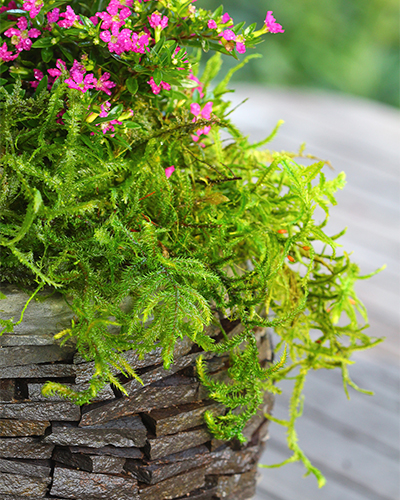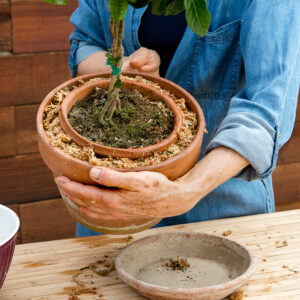Moss as a Sustainable Alternative: A Green Choice for a Healthier Planet
In an era where sustainability is more important than ever, moss is emerging as a green hero. Often overlooked, moss is not just a simple ground cover; it’s a powerhouse of ecological benefits. Let’s explore why moss is becoming a popular sustainable alternative in various applications and how it can contribute to a healthier planet.

1. Low Maintenance and Water Conservation
One of the standout features of moss is its low maintenance needs. Unlike traditional lawns and plants, moss requires minimal water. It thrives in damp environments and can absorb moisture directly from the air. This makes it an excellent choice for areas facing water scarcity. By replacing traditional grass lawns with moss, you can significantly reduce your water usage, contributing to water conservation efforts.
2. Natural Air Purifier
Moss is a natural air purifier. It absorbs pollutants and toxins from the air, improving air quality. In urban areas, where pollution levels are high, incorporating moss into green spaces can help reduce harmful pollutants, making the air cleaner and healthier to breathe. Moss walls, often used in office buildings and homes, not only enhance aesthetics but also contribute to better indoor air quality.
3. Carbon Sequestration
Moss plays a crucial role in carbon sequestration. It absorbs carbon dioxide during photosynthesis, storing carbon and releasing oxygen. Mosses collectively provide more carbon offset than all the trees in the world. This ability to sequester carbon makes moss an important ally in combating climate change. By integrating moss into urban landscapes, we can create green areas that actively work to reduce carbon footprints.

4. Erosion Control and Soil Health
Moss is an effective solution for erosion control. Its dense, mat-like structure helps stabilize soil, preventing erosion on slopes and riverbanks. Moreover, moss contributes to soil health by retaining moisture and promoting the growth of beneficial microorganisms. Using moss in landscaping can enhance soil stability and health, making it a sustainable choice for land management.
5. Biodiversity Support
Moss provides habitat and food for various microorganisms, insects, and small animals. In gardens and natural landscapes, moss fosters biodiversity by supporting these life forms. Creating moss-rich environments can help sustain local ecosystems, promoting a balanced and healthy ecosystem.

6. Aesthetic and Functional Green Spaces
Moss can be used to create beautiful and functional green spaces. From moss lawns to vertical moss gardens, the aesthetic appeal of moss is undeniable. These green spaces require less maintenance, reduce the need for chemical fertilizers and pesticides, and enhance the overall environment. Moss-covered roofs and walls can also provide insulation, reducing energy consumption for heating and cooling.
7. Urban Greening Initiatives
Cities around the world are incorporating moss into their urban greening initiatives. Moss graffiti, living walls, and green roofs are becoming common sights in urban landscapes. These initiatives not only beautify cityscapes but also contribute to sustainability by reducing urban heat islands, improving air quality, and providing green spaces for residents.
How to Incorporate Moss into Your Life
If you’re inspired to make moss a part of your sustainable lifestyle, here are a few ideas:
- Moss Lawns: Replace traditional grass lawns with low-maintenance moss for a lush, green yard that requires less water and mowing.
- Moss Walls: Install a moss wall in your home or office to improve air quality and add a touch of natural beauty.
- Moss Terrariums: Create moss terrariums as decorative pieces that also promote a sense of calm and connection to nature.
- Moss Pathways: Design moss pathways in your garden for a soft, green walkway that feels like walking on a plush carpet.
- Moss Art: Incorporate moss into DIY art projects, such as moss-covered letters or frames, for unique and eco-friendly decor.
Moss is more than just a plant; it’s a sustainable alternative with numerous environmental benefits. From conserving water to purifying air, sequestering carbon, and supporting biodiversity, moss offers practical solutions for a healthier planet. By embracing moss in various aspects of our lives, we can contribute to a greener, more sustainable future. So, next time you see a patch of moss, remember it’s not just a simple plant—it’s a green ally in the fight for a sustainable world.







